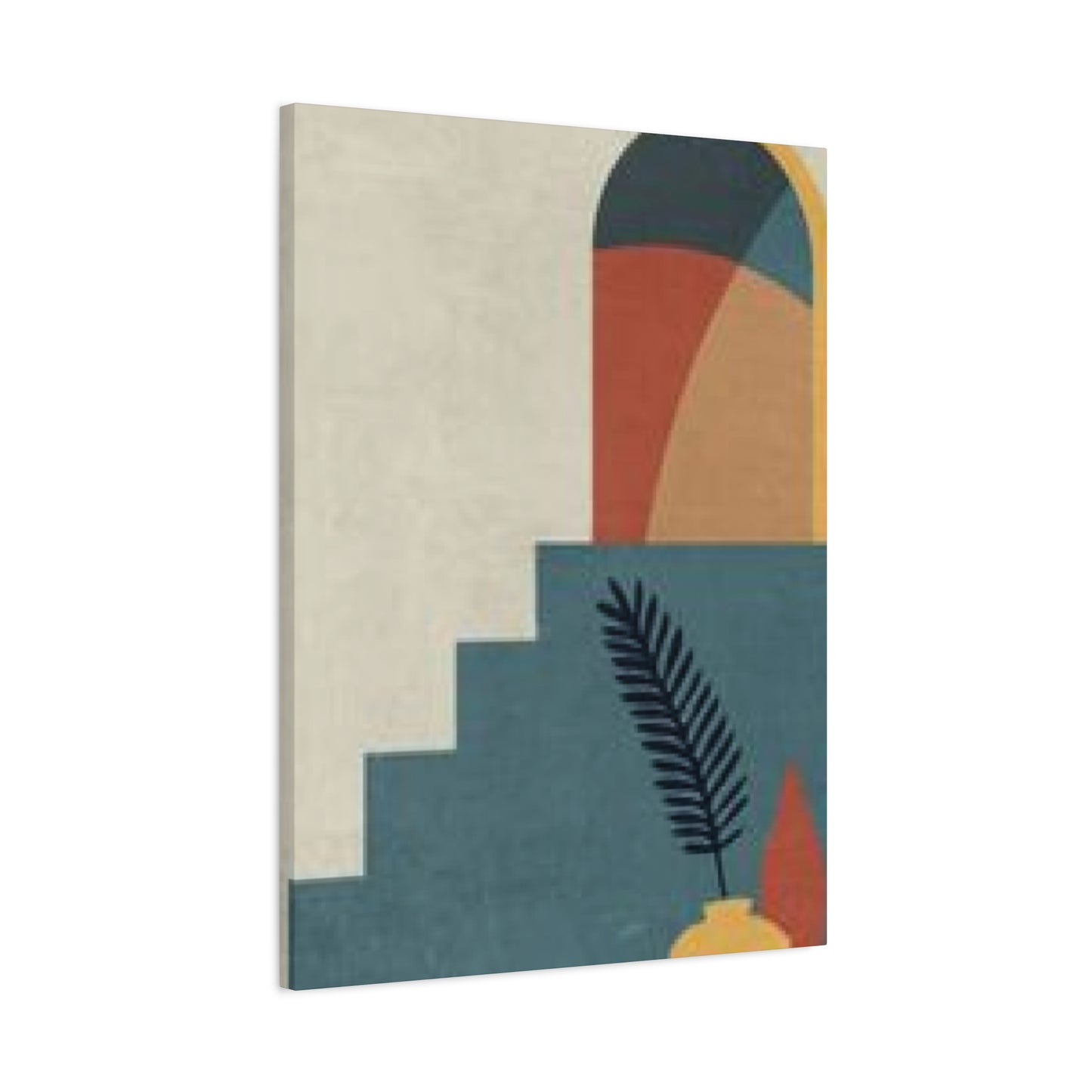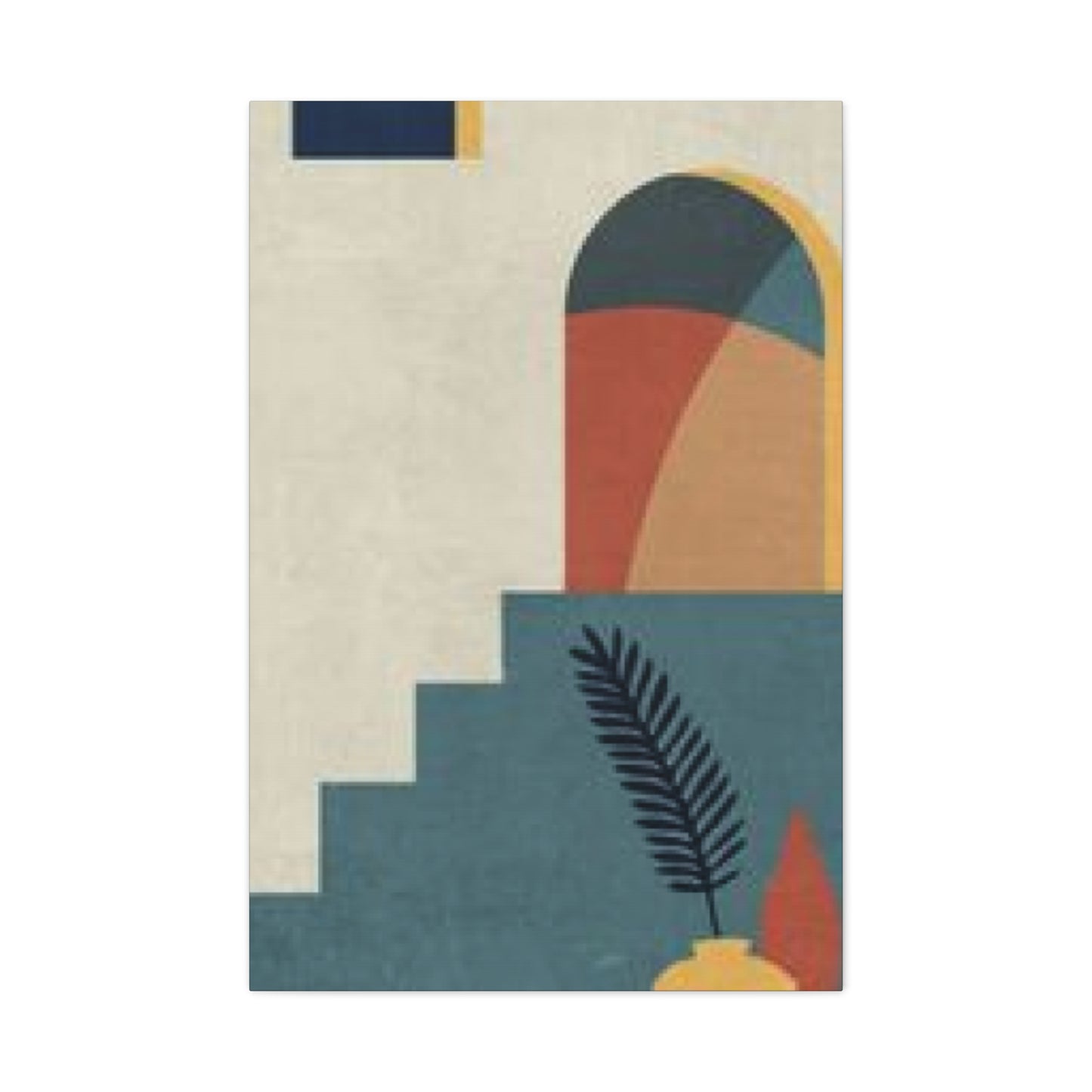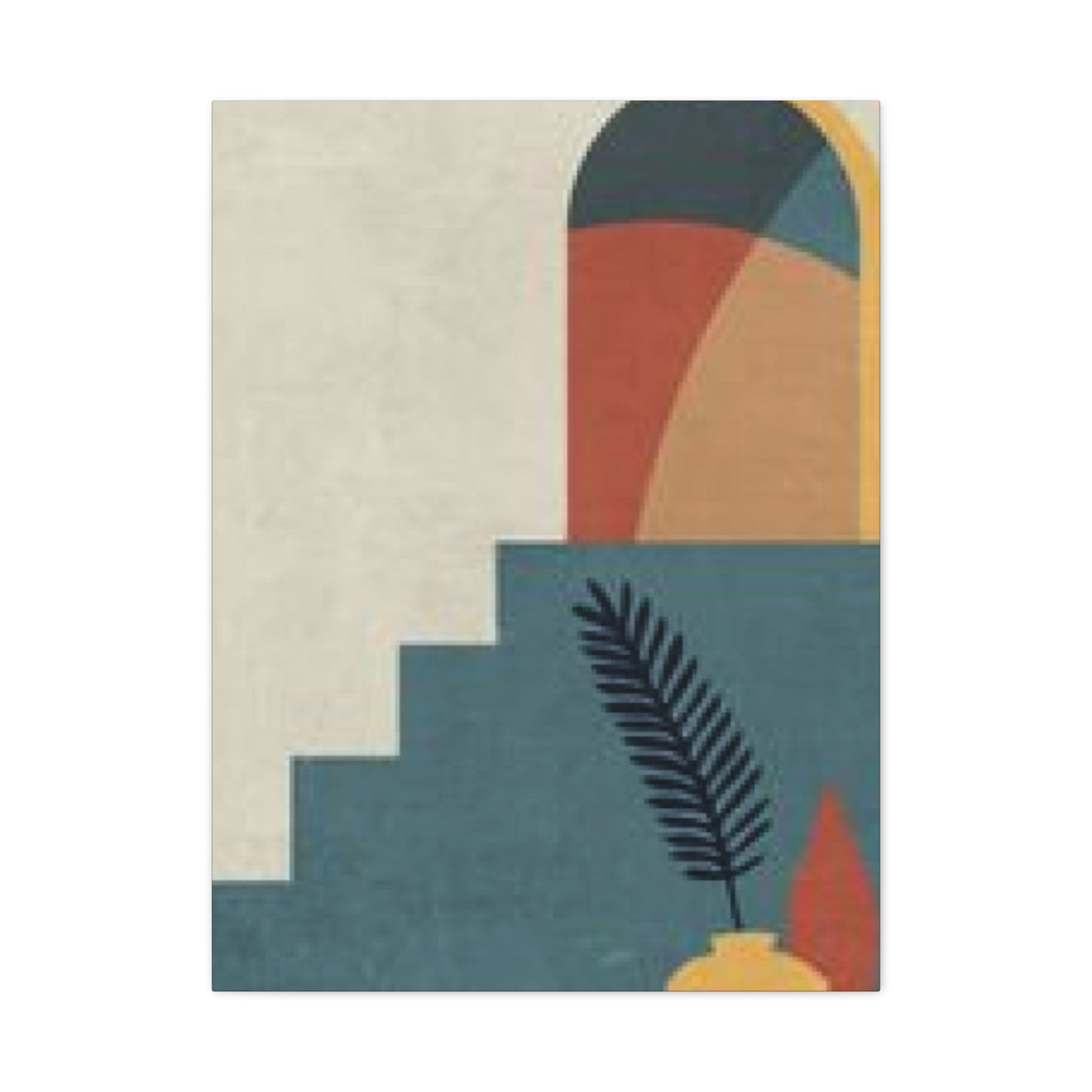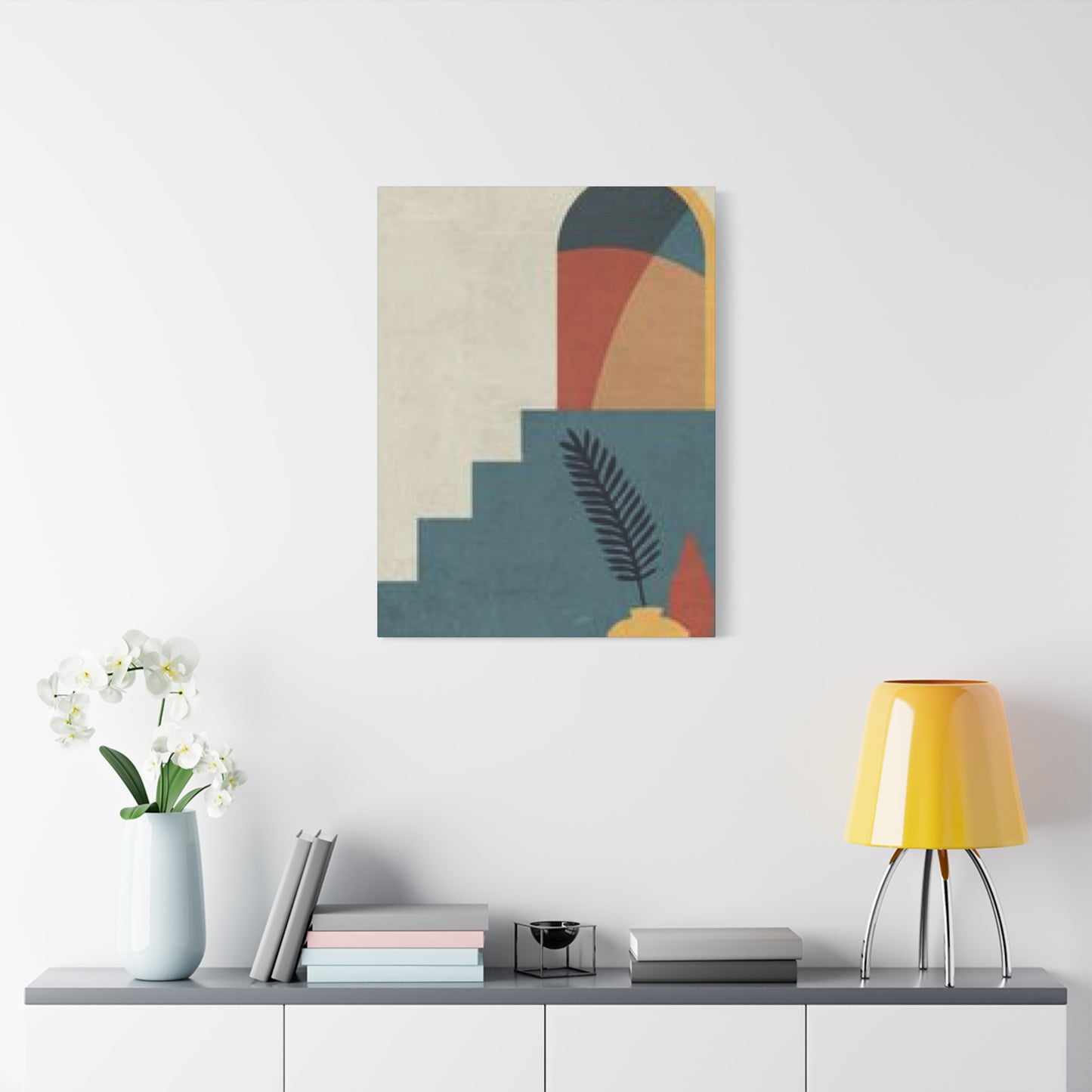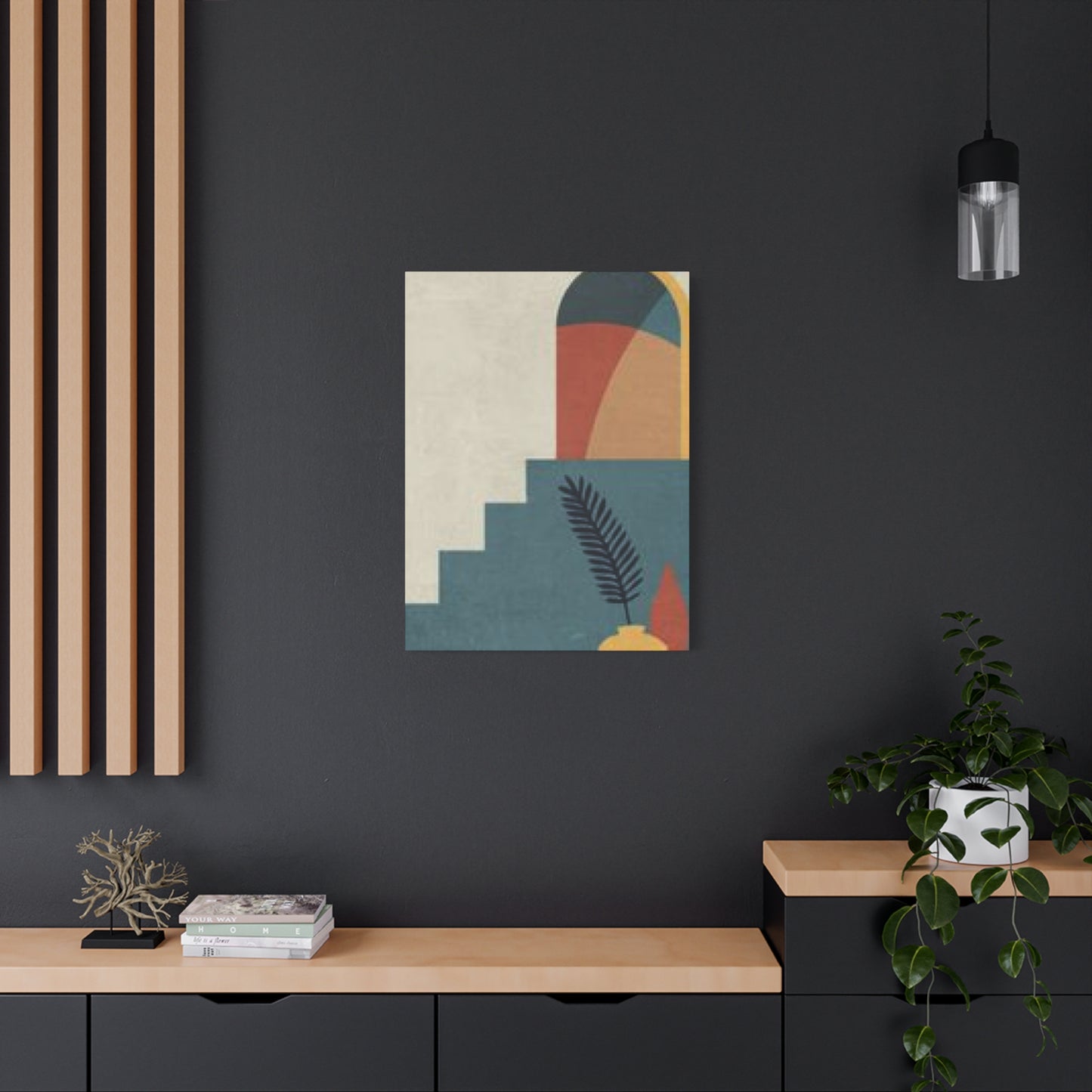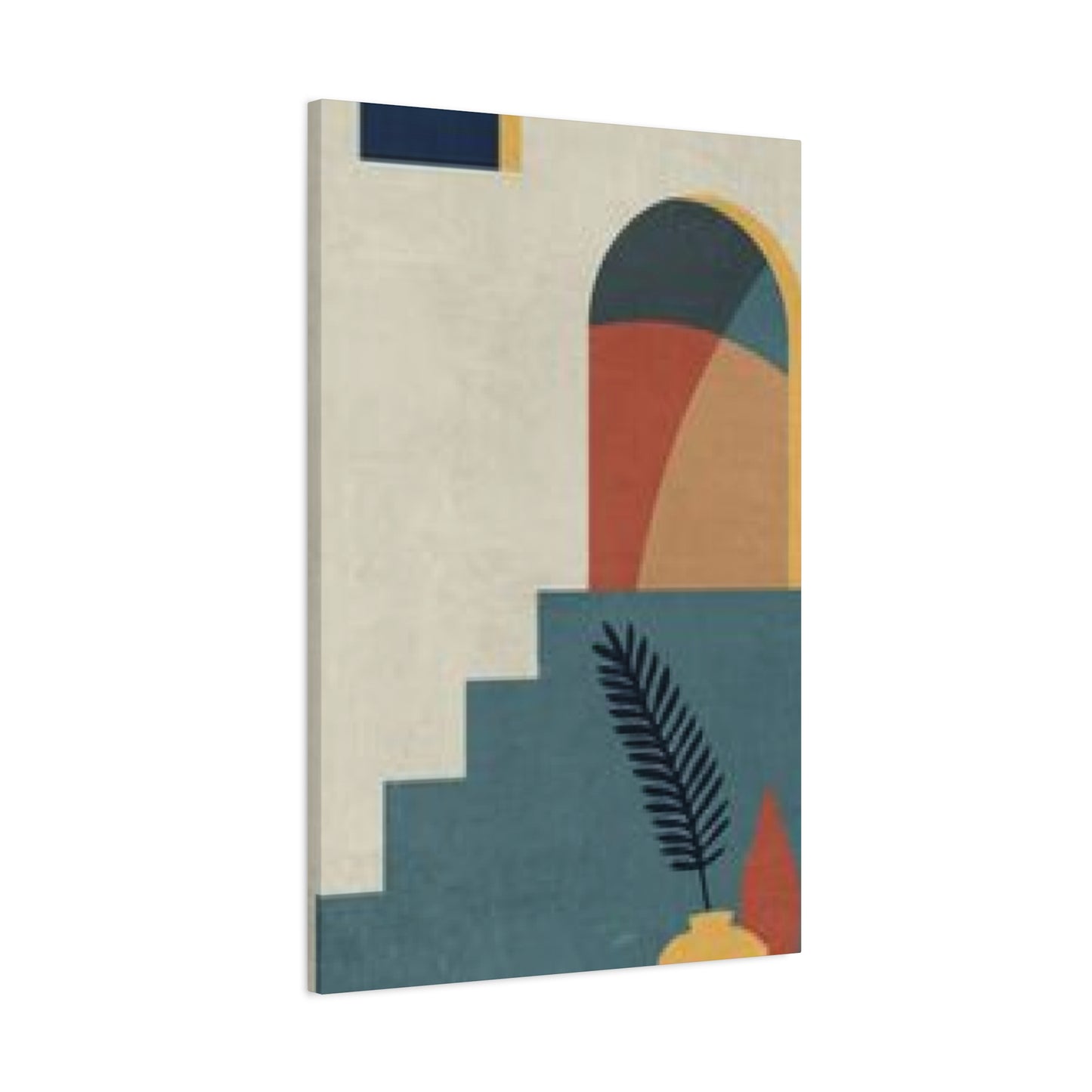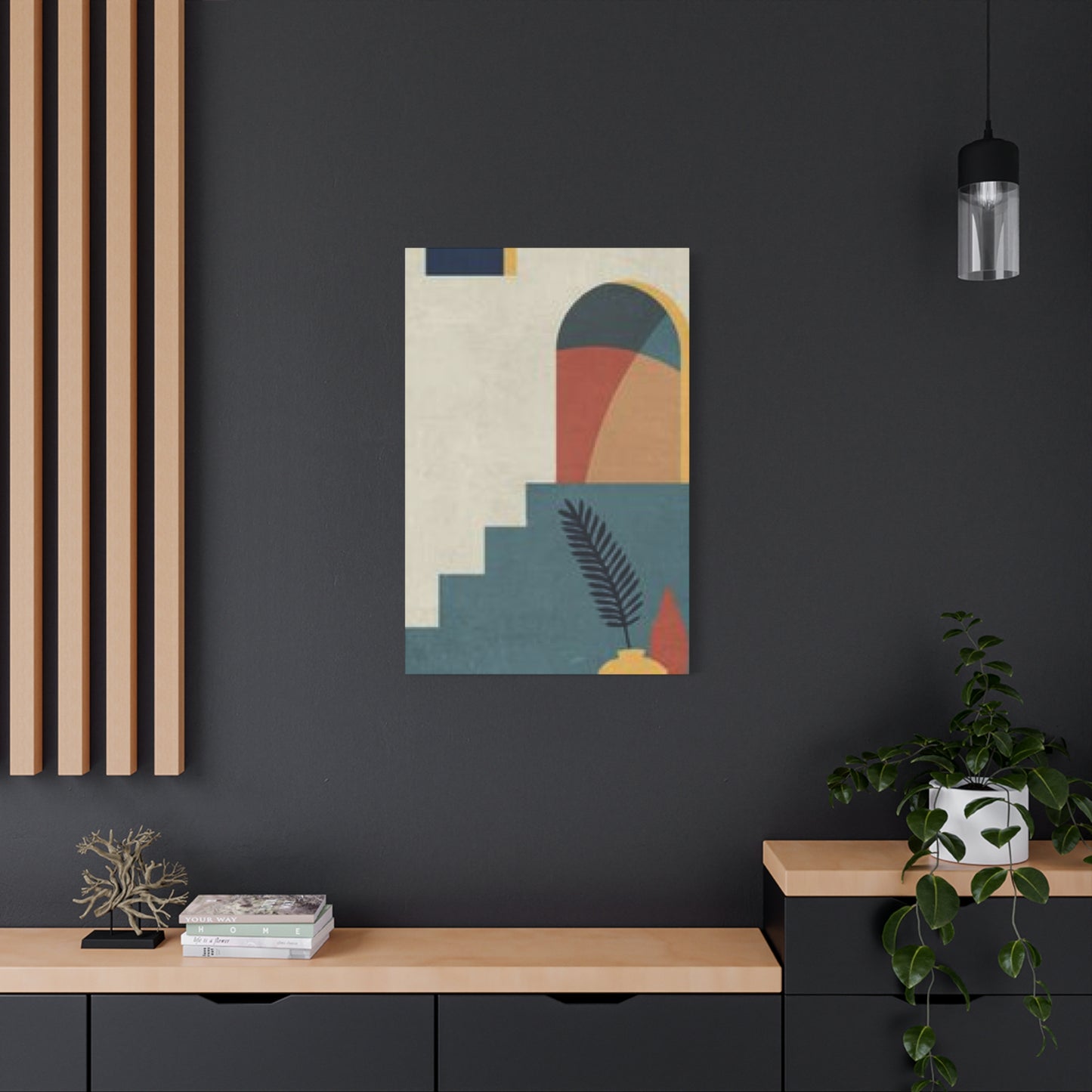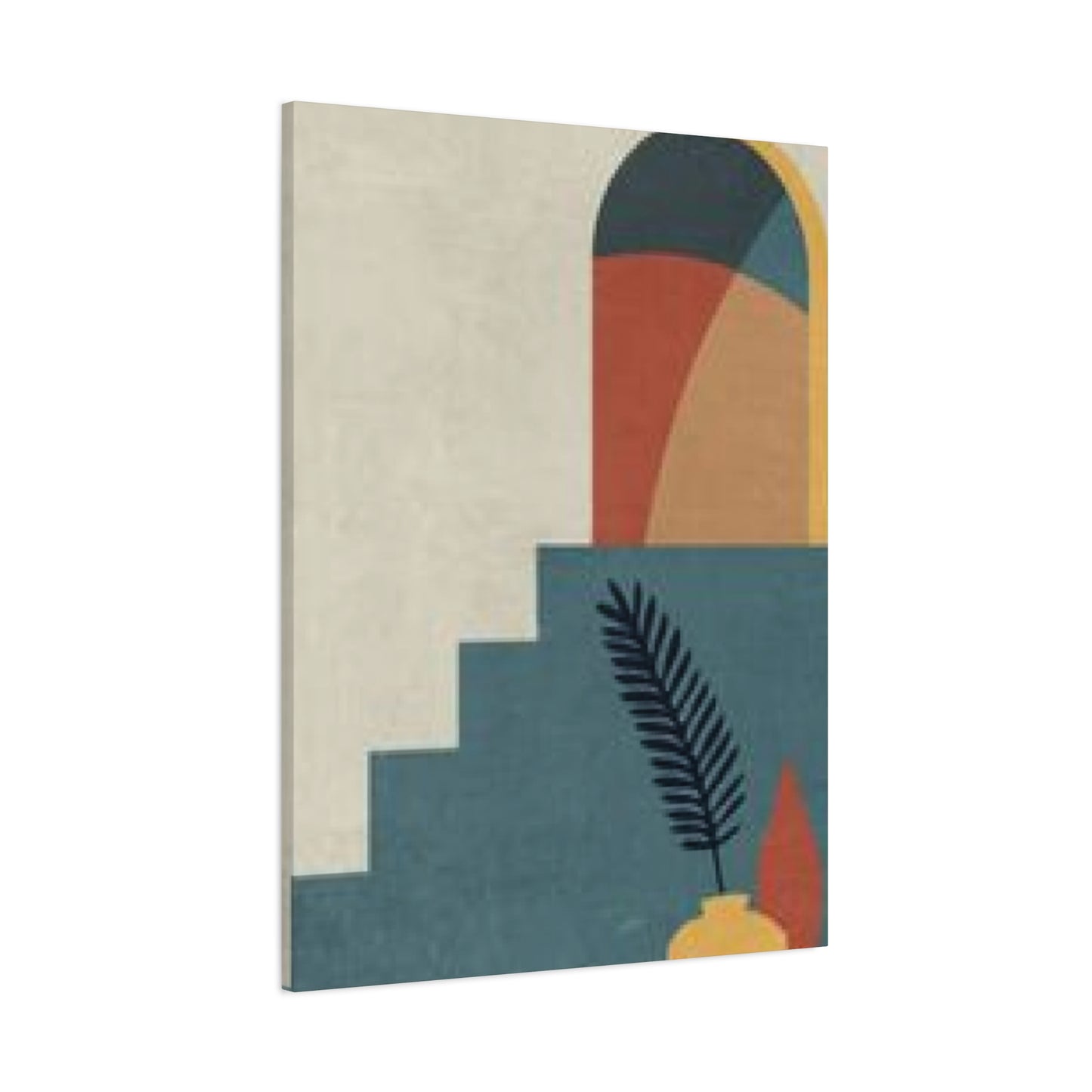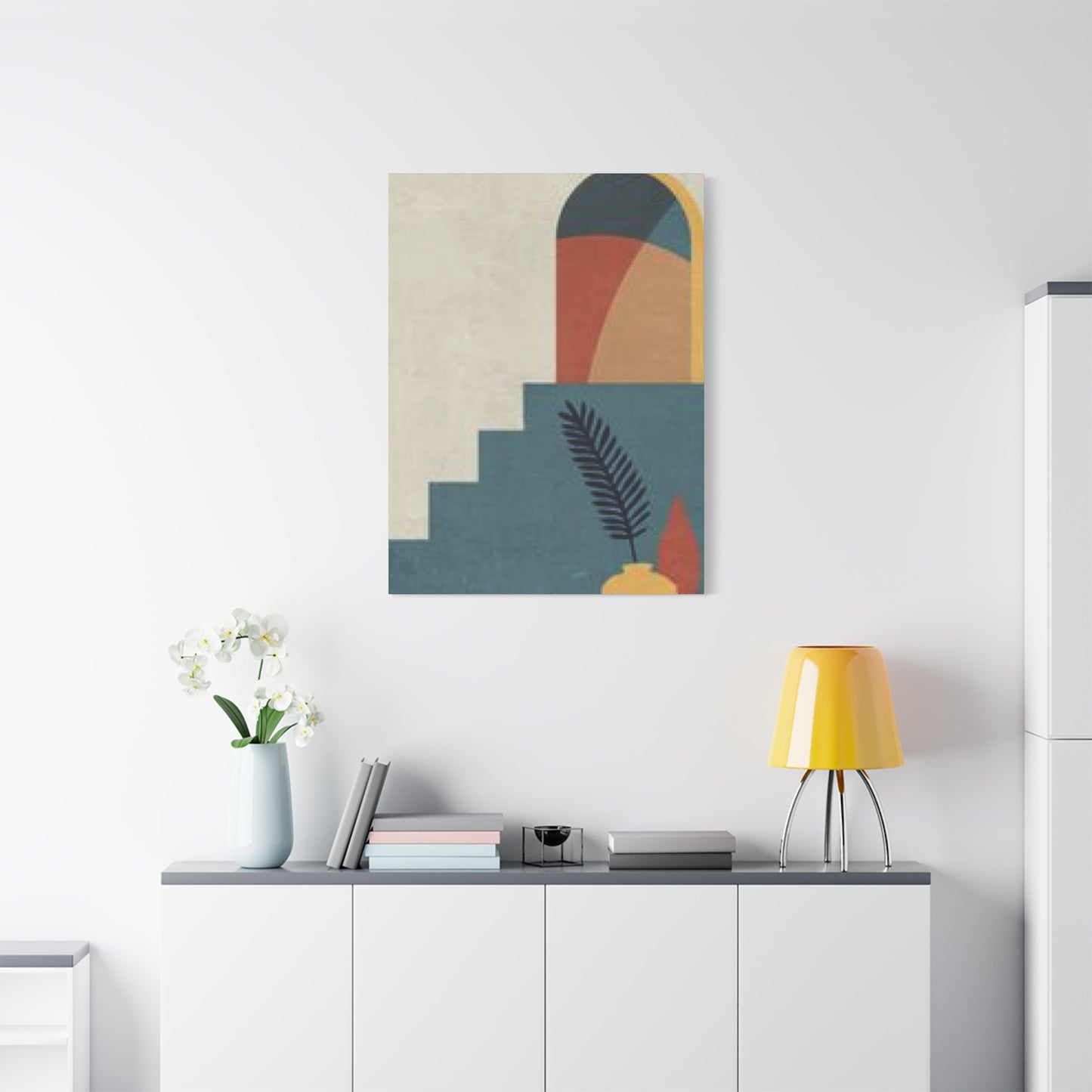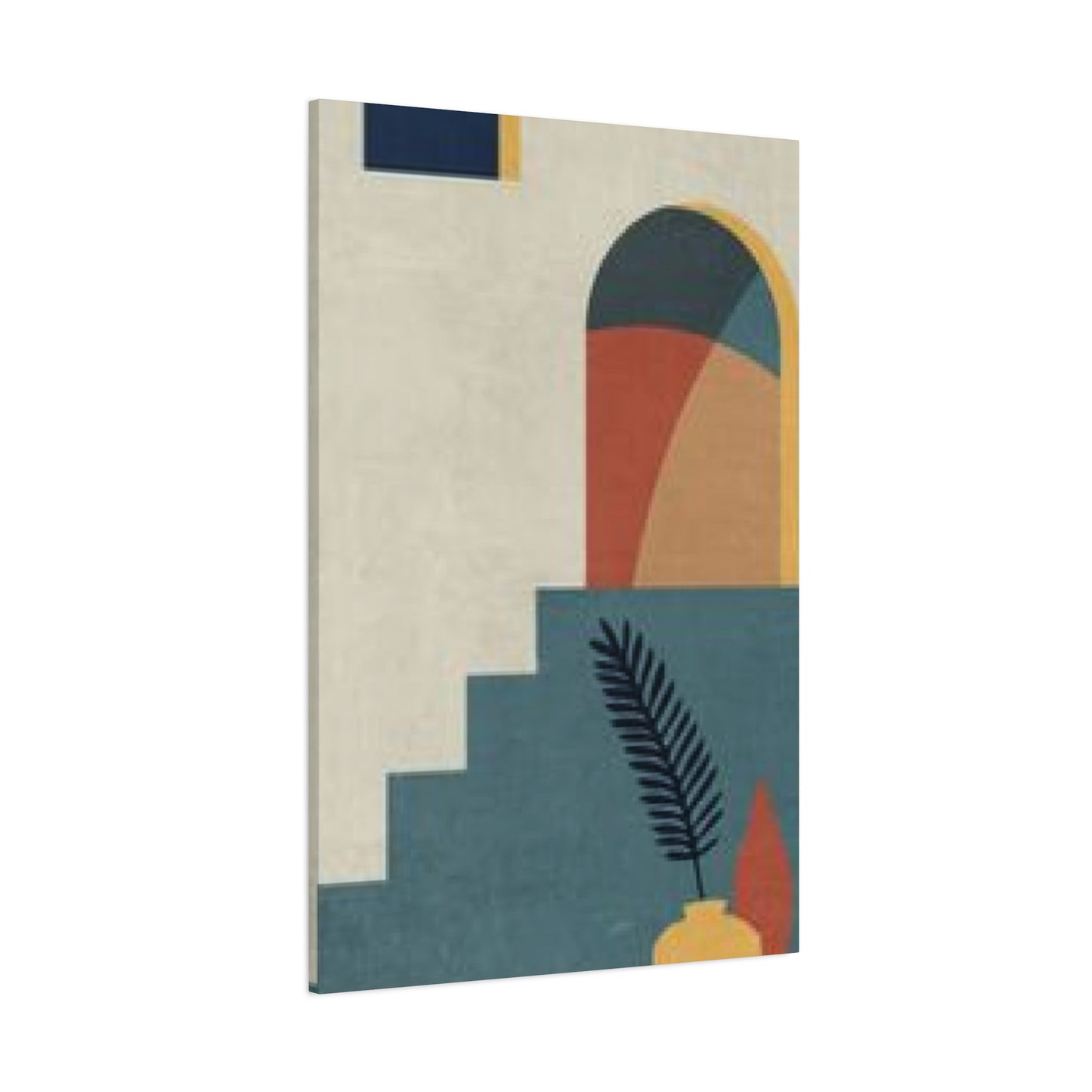The Complete Guide to Moroccan Stair Design Wall Art: Transform Your Space with Timeless Elegance
Moroccan design has captivated interior decorators and homeowners worldwide with its distinctive blend of geometric patterns, vibrant colors, and architectural magnificence. Among the most striking elements of Moroccan aesthetics are the staircases, which serve not merely as functional structures but as artistic masterpieces that tell stories of ancient craftsmanship and cultural heritage. This comprehensive guide explores the enchanting world of Moroccan stair design wall art, offering insights into how these decorative pieces can revolutionize your living spaces while celebrating the rich architectural traditions of North Africa.
The allure of Moroccan staircases extends far beyond their practical purpose. These architectural wonders showcase intricate tilework, stunning arches, ornate metalwork, and mesmerizing patterns that have been perfected over centuries. When captured in wall art form, these elements bring an exotic sophistication to any room, creating focal points that spark conversation and admiration. Whether you're drawn to the weathered charm of traditional riads, the grandeur of palace staircases, or the intimate beauty of courtyard steps, Moroccan stair design wall art offers countless possibilities for enhancing your interior décor.
Moroccan Stair Design Wall Art
The foundation of any discussion about Moroccan decorative pieces begins with understanding the essence of Moroccan stair design wall art itself. These artistic representations capture the soul of North African architecture, translating three-dimensional spaces into two-dimensional masterpieces that preserve the magic of Moroccan staircases. The beauty lies in how these artworks encapsulate multiple design elements simultaneously: the geometric precision of tile patterns, the organic curves of archways, the interplay of light and shadow, and the rich color palettes that define Moroccan aesthetics.
When selecting pieces that showcase Moroccan stair designs, you're not merely purchasing decoration for your walls. You're investing in a visual narrative that connects your home to centuries of architectural evolution and cultural expression. These artworks typically feature staircases ascending through narrow passageways, winding through lush courtyards, or rising beneath ornate arches. The compositions often incorporate surrounding architectural elements such as carved wooden doors, decorative railings, potted plants, and traditional lanterns that enhance the authenticity and depth of the scene.
The versatility of Moroccan stair design wall art makes it suitable for various interior styles. While it naturally complements Mediterranean, bohemian, and eclectic décor schemes, these pieces can also add an unexpected element of sophistication to modern minimalist spaces or provide a striking contrast in traditional Western interiors. The key is selecting artwork that resonates with your personal aesthetic while maintaining the authentic characteristics that make Moroccan design so distinctive.
Understanding the cultural context behind these designs enriches your appreciation of the artwork. Moroccan staircases were traditionally constructed using local materials such as limestone, clay tiles, and plaster, with designs influenced by Berber, Arab, and Andalusian architectural traditions. The staircases in Moroccan riads and palaces were often designed to create a sense of discovery, with each turn revealing new patterns, colors, and decorative elements. This journey-like quality translates beautifully into wall art, inviting viewers to mentally ascend these steps and imagine the spaces beyond.
The composition of quality Moroccan stair design wall art considers multiple factors: perspective, lighting, color balance, and the inclusion of contextual elements that tell a more complete story. Photographers and artists who specialize in capturing these scenes understand the importance of timing, often waiting for specific lighting conditions that highlight the textures and patterns of the staircases. The resulting images carry an almost tangible quality, making viewers feel as though they could reach out and touch the cool tiles or weathered plaster walls.
Elegant Moroccan Staircase Canvas Prints
Canvas prints representing elegant Moroccan staircases bring a refined sophistication to interior spaces that few other decorative elements can match. The term elegant in this context refers to pieces that emphasize grace, balance, and understated beauty rather than overwhelming visual complexity. These prints typically showcase staircases in pristine condition, often found in meticulously maintained riads or recently restored historical buildings, where the architectural elements shine with clarity and purpose.
The medium of canvas itself contributes significantly to the presentation of these elegant designs. Unlike paper prints or metal surfaces, canvas provides a textured surface that adds depth and dimension to the imagery. The slight grain of the canvas can enhance the appearance of aged plaster walls and intricate tilework, creating a more authentic representation of the original architecture. High-quality canvas prints also offer superior color reproduction, ensuring that the subtle gradations in the tile patterns and the warm tones of the walls are accurately preserved.
Elegant Moroccan staircase canvas prints often feature compositions with excellent balance between architectural elements and negative space. Rather than filling every inch of the frame with visual information, these pieces allow the eye to rest and appreciate the individual components. A staircase might be positioned according to the rule of thirds, with an archway providing a natural frame within the frame, and soft natural light illuminating the scene from an unseen source. This compositional restraint creates a sense of tranquility and sophistication that defines elegance in art.
The color palettes in elegant Moroccan staircase canvas prints tend toward harmonious combinations rather than jarring contrasts. You'll often find soft ochres, creamy whites, gentle blues, and muted terracottas that create a soothing visual experience. These colors reflect the natural pigments traditionally used in Moroccan architecture, derived from minerals, plants, and clays indigenous to the region. The restrained color approach doesn't mean the artwork lacks impact; rather, it allows the architectural forms and patterns to take center stage without competing with overly vibrant hues.
When incorporating elegant Moroccan staircase canvas prints into your décor, consider the surrounding environment carefully. These pieces work exceptionally well in spaces where you want to create a sense of calm sophistication, such as bedrooms, reading nooks, or professional offices. The understated elegance makes them suitable for settings where more dramatic artwork might feel overwhelming. They pair beautifully with neutral furnishings, natural textures like linen and wood, and accent pieces in complementary earth tones.
The size selection for elegant canvas prints depends on both the wall space available and the desired impact. A large-scale canvas print of a Moroccan staircase can serve as the commanding focal point of a living room or dining area, while smaller prints work well in gallery wall arrangements or more intimate spaces. The beauty of elegant designs is their scalability; the refined composition maintains its impact whether displayed at two feet or six feet in width.
Quality considerations are paramount when selecting elegant Moroccan staircase canvas prints. Look for prints produced using archival-quality inks that resist fading over time, mounted on sturdy wooden frames that prevent warping, and finished with protective coatings that allow for easy cleaning. The attention to production quality ensures that your investment maintains its beauty for years, developing the kind of timeless presence that characterizes truly elegant décor.
Intricate Moroccan Staircase Wall Décor
Intricate Moroccan staircase wall décor celebrates the extraordinary detail work that defines the pinnacle of North African architectural craftsmanship. Where elegant pieces emphasize simplicity and restraint, intricate designs showcase the maximum expression of decorative artistry. These pieces feature staircases adorned with elaborate zellige tilework, complex geometric patterns, detailed carved plasterwork, and multiple layers of ornamentation that reward close examination and reveal new details with each viewing.
The intricacy in these designs stems from the traditional Moroccan approach to decoration, which abhors empty space and seeks to fill surfaces with meaningful patterns that reflect mathematical precision and spiritual symbolism. When you examine an intricate Moroccan staircase in wall décor form, you're witnessing the culmination of skills passed down through generations of master craftsmen. Each tile in a zellige pattern was hand-cut and placed according to complex geometric formulas. Each carved plaster element was shaped by skilled hands using techniques refined over centuries.
These intricate designs offer a visual feast that engages viewers on multiple levels. From a distance, the overall composition creates a unified impression of opulence and grandeur. As you move closer, individual pattern systems emerge from the complexity, revealing how multiple decorative traditions coexist in harmony. Upon intimate examination, you discover minute details: the slight variations in hand-cut tiles, the texture of carved plaster, the way light interacts with different surface treatments, and the subtle color shifts within seemingly monochromatic elements.
Intricate Moroccan staircase wall décor works particularly well in spaces where you want to make a bold statement or create a sense of luxury and exoticism. These pieces naturally draw the eye and command attention, making them ideal for entrance halls, formal dining rooms, or prominent walls in living areas. The complexity of the designs means they're best displayed where they have room to breathe, without competing with too many other decorative elements. A single intricate piece can provide sufficient visual interest for an entire wall.
The color dynamics in intricate Moroccan staircase wall décor tend toward richness and variety. You might encounter deep blues and vibrant turquoises characteristic of traditional Moroccan tile work, warm ochres and terracottas from plastered walls, brilliant whites from carved stucco details, and accents of emerald green, ruby red, or golden yellow. These colors don't simply coexist; they interact according to principles of Islamic geometric art, where color relationships follow mathematical ratios designed to create visual harmony despite apparent complexity.
When selecting intricate Moroccan staircase wall décor, consider the medium carefully. While canvas prints remain popular, these complex designs sometimes benefit from alternative presentations. Metal prints can enhance the sharpness of geometric patterns and provide a contemporary edge. Acrylic prints add depth and luminosity that emphasizes the play of light across complex surfaces. Framed photographic prints under glass offer maximum detail preservation, allowing viewers to appreciate every nuance of the intricate patterns.
The challenge and reward of living with intricate Moroccan staircase wall décor lies in its inexhaustible visual richness. Unlike simpler designs that you might eventually cease to notice, intricate pieces continue to reveal new aspects as lighting conditions change throughout the day, as your perspective shifts, or as your familiarity with the piece deepens. This enduring engagement makes intricate designs particularly valuable for spaces where you spend significant time and want art that grows with you rather than becoming invisible through familiarity.
Moroccan Style Stair Design Canvas
Moroccan style stair design canvas pieces encompass a broader interpretation of North African architectural aesthetics, extending beyond strictly traditional representations to include contemporary interpretations and stylized renderings. The term style in this context acknowledges that while the artwork draws inspiration from authentic Moroccan architecture, it may incorporate artistic liberties, modern compositional techniques, or fusion elements that blend Moroccan motifs with other design traditions.
This category offers exciting possibilities for those who appreciate Moroccan aesthetics but want artwork that aligns with contemporary interior design sensibilities. A Moroccan style stair design canvas might feature a staircase photographed with modern techniques such as intentional blur to create a dreamlike quality, selective desaturation that emphasizes certain colors while muting others, or unusual perspectives that highlight abstract patterns within the architectural forms. These artistic choices create pieces that honor Moroccan traditions while speaking the visual language of contemporary art.
The flexibility inherent in Moroccan style interpretations makes these canvas pieces particularly versatile for diverse interior settings. A minimalist modern home might display a Moroccan staircase rendered in nearly monochromatic tones with emphasis on geometric patterns rather than ornate details. A transitional space might benefit from a piece that balances traditional Moroccan elements with clean lines and uncluttered composition. An eclectic interior could showcase a boldly stylized interpretation that amplifies the exotic qualities through enhanced colors or surreal compositional elements.
Moroccan style stair design canvas artwork often appeals to a younger demographic or those new to incorporating global design elements into their homes. These pieces provide an accessible entry point into Moroccan aesthetics without requiring a comprehensive commitment to traditional décor. You can pair them with furniture and accessories from various design periods and cultural origins, as the stylized approach creates a bridge between different aesthetic worlds rather than demanding strict adherence to a single design vocabulary.
The artistic techniques applied to create Moroccan style stair design canvases vary widely among creators. Some artists use digital manipulation to transform photographs of actual Moroccan staircases, applying filters, adjusting color balances, or combining multiple images to create composite scenes that never existed in reality but capture the essence of Moroccan architecture. Others create original illustrations or paintings inspired by Moroccan staircases, interpreting the architectural elements through personal artistic styles ranging from watercolor softness to bold graphic design approaches.
Color exploration in Moroccan style stair design canvases extends beyond traditional Moroccan palettes. While you'll still find the classic blues, whites, and earth tones, stylized pieces might introduce unexpected color combinations: perhaps pairing traditional tile patterns with contemporary gray tones, or reimagining a staircase scene in jewel tones that intensify the exotic appeal. These color choices allow the artwork to coordinate with a broader range of interior color schemes while maintaining recognizably Moroccan characteristics.
When incorporating Moroccan style stair design canvas pieces into your space, consider how the level of stylization affects the overall atmosphere. Heavily stylized pieces lean toward contemporary art and pair well with modern furnishings, abstract accessories, and minimalist décor approaches. Lightly stylized pieces that maintain strong connections to traditional Moroccan aesthetics work better in transitional spaces or interiors that blend multiple design influences. Understanding this spectrum helps you select pieces that enhance rather than clash with your existing décor.
Decorative Moroccan Stairs Wall Art
Decorative Moroccan stairs wall art emphasizes the ornamental aspects of North African staircase design, focusing on pieces that function primarily as beautiful embellishments rather than architectural documentation or cultural representation. This category celebrates decoration for decoration's sake, acknowledging that sometimes we choose art simply because it brings beauty and visual pleasure into our spaces without needing to serve deeper conceptual purposes.
The decorative emphasis in these pieces often means they feature the most visually appealing aspects of Moroccan stairs: vibrant tile patterns catching perfect light, architectural details that create pleasing compositions, color combinations that energize or soothe, and overall designs that complement interior décor schemes. The selection and presentation prioritize aesthetic impact over historical accuracy or cultural authenticity, though quality pieces still maintain respect for Moroccan design traditions.
Decorative Moroccan stairs wall art excels at solving specific interior design challenges. Perhaps you have a blank wall that needs visual interest but doesn't demand a profound artistic statement. Maybe you're trying to tie together disparate colors in your furnishings and need artwork that incorporates multiple hues. Or you might be seeking to lighten the mood of a space that feels too serious or corporate. Decorative pieces address these practical needs while adding the exotic appeal of Moroccan architecture to your environment.
The production of decorative Moroccan stairs wall art often employs techniques that enhance visual appeal. Colors might be slightly saturated beyond natural levels to create more impact. Contrast might be increased to make patterns pop more dramatically. Composition might be adjusted to improve balance or create more dynamic visual flow. These enhancements don't falsify the subject matter; rather, they optimize it for decorative purposes, similar to how fashion photography enhances models while maintaining recognizable human features.
Scale and proportion play crucial roles in decorative Moroccan stairs wall art. These pieces often come in standardized sizes that fit common wall dimensions and coordinate with typical furniture arrangements. You'll find options designed specifically for hanging above sofas, for creating gallery walls, for filling narrow vertical spaces, or for making bold statements on large empty walls. This practical approach to sizing makes decorating with Moroccan staircase imagery accessible to homeowners without requiring custom framing or unusual installation solutions.
Decorative Moroccan stairs wall art also encompasses three-dimensional decorative objects inspired by Moroccan staircases rather than flat wall hangings exclusively. You might find sculptural pieces that recreate elements of Moroccan stairs in miniature, mixed media artworks that incorporate actual tiles or plaster fragments alongside photographic elements, or layered compositions that create depth through multiple planes. These dimensional approaches add tactile interest and can create stunning shadow effects when properly lit.
The accessibility of decorative Moroccan stairs wall art makes it particularly popular for rental properties, vacation homes, or spaces undergoing frequent redecoration. Because these pieces emphasize visual appeal and coordination with existing décor over investment value or artistic significance, they offer guilt-free options for refreshing your space without major financial commitment. You can experiment with Moroccan aesthetics, change pieces seasonally, or update your décor as trends evolve without feeling you're diminishing a significant art collection.
Moroccan Staircase and Arch Wall Art
Moroccan staircase and arch wall art celebrates one of the most iconic pairings in North African architecture. Arches define Moroccan building design, creating transitions between spaces, framing views, providing structural support, and offering endless opportunities for decorative embellishment. When combined with staircases in wall art compositions, arches add vertical interest, create layered perspectives, and enhance the sense of journey and discovery that characterizes the Moroccan architectural experience.
The relationship between staircases and arches in Moroccan design is both functional and symbolic. Functionally, arches often span stairway openings, creating covered passages or marking transitions between different levels of buildings. Symbolically, arches represent portals to new experiences, thresholds between secular and sacred spaces, or passages from public to private domains. Wall art that captures both elements taps into this rich symbolic vocabulary, creating images that resonate on subconscious levels even for viewers unfamiliar with Moroccan architectural traditions.
Compositionally, pieces featuring both staircases and arches offer exceptional visual interest through the interplay of geometric forms. The curved arch contrasts beautifully with the angular lines of stair treads and risers. The vertical thrust of the staircase is balanced by the horizontal span of the arch. The solid structure of both elements is often enhanced by negative space beyond the arch, creating depth and perspective that draw the eye into the composition. These geometric relationships create inherently pleasing compositions that satisfy our psychological attraction to balanced, harmonious visual arrangements.
Moroccan staircase and arch wall art often showcases the decorative potential of architectural ornamentation. Arches in Moroccan design rarely remain plain; they're opportunities for demonstrating craftsmanship through carved plasterwork, painted details, or tile borders. When captured in wall art, these ornamental elements add layers of visual richness. You might see horseshoe-shaped arches adorned with delicate geometric carvings, pointed arches surrounded by elaborate tile frames, or multiple nested arches creating complex patterns of light and shadow.
The lighting in quality Moroccan staircase and arch wall art deserves special attention. North African architecture is designed with intense sunlight in mind, and the interplay between bright exterior light and shaded interior spaces creates dramatic effects. Wall art that successfully captures this lighting dynamic shows brilliant highlights where sun illuminates portions of stairs or archway details, deep shadows that emphasize depth and texture, and subtle gradations between light and dark that reveal the three-dimensional qualities of the architecture. This lighting drama adds emotional resonance to the artwork, creating moods ranging from serene contemplation to exotic mystery.
Color relationships in Moroccan staircase and arch wall art often reflect the traditional Moroccan practice of creating color harmony through limited palettes applied with discipline. You might encounter compositions dominated by variations of blue against white, suggesting the famous blue cities like Chefchaouen. Others might explore the warm spectrum with ochres, terracottas, and creamy whites characteristic of earthen architecture. The restricted color palette, far from being limiting, actually enhances visual impact by creating unity and allowing patterns and architectural forms to dominate the composition.
When incorporating Moroccan staircase and arch wall art into your interior, consider how the multiple focal points within the composition affect room dynamics. The staircase naturally leads the eye upward, creating vertical movement in the space, while the arch provides a horizontal anchor and frames internal focal points within the image. This dual directionality makes these pieces particularly effective for rooms where you want to create visual complexity and interest without relying on multiple art pieces. A single well-chosen image of Moroccan stairs beneath an arch can provide sufficient visual stimulation for an entire wall.
Stunning Moroccan Steps Canvas Prints
Stunning Moroccan steps canvas prints elevate the presentation of North African staircase photography and illustration to the highest aesthetic standards. The term stunning implies imagery that arrests attention immediately, that makes viewers stop in their tracks and experience a moment of pure visual pleasure. These pieces achieve their impact through exceptional composition, perfect lighting, outstanding color reproduction, and subjects that exemplify the most beautiful aspects of Moroccan stair design.
What makes a Moroccan steps canvas print stunning rather than merely attractive involves multiple factors working in concert. First, the subject matter itself must possess inherent beauty: perhaps stairs in exceptional condition with flawless tile work, or weathered steps that tell stories through their patina and wear patterns. Second, the photography or artistic rendering must demonstrate technical excellence, with perfect focus, appropriate depth of field, and exposure that captures both highlights and shadows with detail. Third, the composition must guide the eye through the image in a satisfying way, creating visual flow that feels both natural and intentional.
Stunning Moroccan steps canvas prints often feature dramatic perspectives that emphasize the monumentality or intimacy of the stairs. A low angle might make a modest staircase appear grand and imposing, encouraging feelings of awe. An elevated perspective might reveal the geometric patterns of tiled steps in ways impossible to appreciate while actually climbing them, creating abstract beauty from functional architecture. Unexpected angles can transform familiar architectural elements into nearly unrecognizable patterns and forms that intrigue viewers and reward careful study.
The texture rendering in stunning canvas prints contributes significantly to their impact. Canvas as a medium naturally possesses a subtle texture that, when combined with high-resolution printing, can suggest the tactile qualities of the original architecture. You can almost feel the coolness of ceramic tiles, the rough texture of aged plaster, the smooth worn surfaces of stone steps shaped by countless footfalls. This implied tactility creates a more immersive experience than perfectly smooth print surfaces, making the artwork feel like a window into another space rather than merely a representation of it.
Color intensity and saturation in stunning Moroccan steps canvas prints require careful calibration. The goal is to reproduce or enhance the colors sufficiently to create impact without pushing into artificial or garish territory. The blues of traditional Moroccan tile work should appear rich and inviting, not electric or overwhelming. Earth tones should feel warm and natural, not muddy or dull. The whites and creams of walls and ceilings should appear clean and bright, not blown out or lifeless. Achieving this color balance requires both skilled photography or digital artistry and high-quality printing processes that accurately reproduce subtle color relationships.
Stunning Moroccan steps canvas prints often incorporate environmental context that enhances the central subject. Rather than isolating the staircase as a pure architectural element, these prints might include portions of doorways revealing spaces beyond, potted plants adding organic softness to geometric architecture, traditional lanterns suggesting the warm glow of evening light, or figures in traditional dress that provide scale and cultural context. These contextual elements transform the image from mere documentation into storytelling, inviting viewers to imagine the full sensory experience of being present in the space.
The emotional resonance of stunning Moroccan steps canvas prints extends beyond aesthetic appreciation. These images often evoke feelings of wanderlust, inspiring dreams of travel to exotic locations. They might create nostalgia in viewers who have visited Morocco, serving as visual mementos of memorable experiences. For those drawn to architectural beauty, they provide satisfaction similar to experiencing great buildings in person. And for everyone, they offer a brief mental escape to spaces that feel removed from the everyday environments of modern life, providing a form of visual vacation available whenever you glance at your wall.
Traditional Moroccan Staircase Wall Décor
Traditional Moroccan staircase wall décor emphasizes authenticity and historical accuracy in representing North African architectural elements. These pieces showcase staircases as they have existed for centuries, featuring time-honored construction methods, classical decorative approaches, and the patina of age that distinguishes genuinely historical architecture from modern reproductions. For collectors and enthusiasts who value cultural authenticity, traditional pieces offer connections to living heritage and centuries of architectural evolution.
The distinction between traditional and contemporary interpretations becomes clear when examining specific design elements. Traditional Moroccan staircase wall décor features authentic materials: limestone or marble steps worn smooth by generations of use, zellige tile work created through centuries-old cutting and placement techniques, carved plaster demonstrating classical Islamic geometric patterns, and woodwork crafted using traditional joinery methods. The colors reflect natural pigments and the aging process rather than modern synthetic paints, resulting in softer, more complex hues that come from mineral and plant-based materials.
Traditional pieces often document staircases in specific historical contexts: ancient medinas where narrow passages connect multi-story buildings, restored riads where preservation efforts maintain original architectural features, historic palaces where grand staircases served ceremonial purposes, or rural kasbahs where vernacular building traditions remained unchanged for centuries. This specificity makes traditional Moroccan staircase wall décor valuable not just as decoration but as cultural documentation preserving images of spaces that may change or disappear as modernization continues.
The compositional approach in traditional Moroccan staircase wall décor tends toward documentation rather than artistic interpretation. While the photographer or artist certainly makes choices about framing, lighting, and moment of capture, the goal is to present the staircase as faithfully as possible rather than transforming it through heavy artistic manipulation. This documentary approach creates images that feel like genuine windows into Moroccan spaces, offering viewers authentic glimpses of architectural heritage rather than stylized artistic visions.
Traditional Moroccan staircase wall décor particularly appeals to those creating interiors with strong cultural authenticity. If you're developing a Moroccan-inspired room or trying to capture the atmosphere of North African riads in your home, traditional pieces provide the visual foundation for your design concept. They pair naturally with authentic Moroccan furnishings, traditional textiles, handcrafted ceramics, and other cultural objects, creating cohesive environments that transport occupants and visitors to different times and places.
The educational value of traditional Moroccan staircase wall décor shouldn't be overlooked. These pieces can inspire interest in Moroccan culture, Islamic art and architecture, traditional building techniques, and the history of North African civilization. Displaying traditional pieces can spark conversations about cultural preservation, the value of traditional craftsmanship, and the importance of maintaining architectural heritage in the face of modernization pressures. For families, they offer opportunities to discuss different cultures and architectural traditions with children, broadening perspectives through everyday exposure to global aesthetics.
Quality traditional Moroccan staircase wall décor requires careful sourcing. The best pieces come from photographers and artists who have spent significant time in Morocco, who understand the cultural context of what they're documenting, and who approach their work with respect for the people and traditions they're representing. Look for creators who provide information about where images were captured, the historical significance of the locations, and the cultural context of the architectural elements. This background information transforms decorative wall art into meaningful cultural artifacts that enrich your understanding as well as your space.
Moroccan Courtyard Stairs Canvas Art
Moroccan courtyard stairs canvas art captures one of the most enchanting settings in North African architecture. Courtyards, or riads, form the heart of traditional Moroccan homes, creating private outdoor spaces surrounded by interior rooms on multiple levels. The staircases connecting these levels become integrated into the courtyard landscape, often adorned with climbing plants, positioned to overlook fountains or gardens, and designed to enhance the sense of an oasis away from the bustling streets beyond the walls.
The unique appeal of courtyard stairs lies in the integration of architecture with nature. Unlike staircases in purely interior settings or those on exterior facades, courtyard stairs exist in liminal spaces that combine built and natural elements. Canvas art depicting these scenes typically includes not just the stairs themselves but also the vegetation that softens the architecture: cascading bougainvillea adding splashes of magenta or orange, potted palms providing vertical green elements, climbing vines softening hard edges, or herb gardens filling the air with fragrance. This combination creates particularly inviting and livable imagery that brings warmth to interior spaces.
The lighting in Moroccan courtyard stairs canvas art offers special qualities distinct from interior or exterior staircase photography. Courtyards create unique lighting conditions as sunlight enters from above, creating pools of brilliant light on portions of stairs and leaving other sections in shade. The changing angle of sun throughout the day means courtyard stairs transform dramatically from morning to afternoon to evening, with shadows and highlights dancing across steps and surrounding walls. Quality canvas art captures these lighting effects, creating images that seem to hold actual sunlight, bringing brightness and warmth to the rooms where they're displayed.
Water features commonly appear in Moroccan courtyard stairs canvas art, adding another dimension to the imagery. Many traditional riads include fountains, pools, or water channels as central courtyard elements, with stairs positioned to provide views of these features. The presence of water introduces reflections, the suggestion of sound, and symbolic references to the precious nature of water in North African desert climates. Canvas art capturing stairs alongside water features creates particularly serene and contemplative images, making them ideal for spaces where you want to promote relaxation and peace.
The perspective in Moroccan courtyard stairs canvas art often emphasizes the sense of enclosure and refuge that courtyard spaces provide. Unlike grand staircases photographed to emphasize their monumental scale, courtyard stairs are frequently captured in ways that highlight their human scale and intimate character. You might see stairs framed by surrounding walls and doorways, creating nested rectangles that draw the eye deeper into the composition. Or the perspective might look down from upper stories, showing how stairs connect different levels around the central courtyard space, creating an understanding of the three-dimensional nature of traditional Moroccan homes.
Color palettes in Moroccan courtyard stairs canvas art tend to be particularly rich and varied due to the combination of architectural and natural elements. You'll encounter the whites, blues, and earth tones of the built environment alongside the greens of foliage, the vibrant hues of flowering plants, the azure blue of water features, and the deep shadows of shaded areas. This color variety makes courtyard stair canvas art particularly versatile for interior decorating, as the multiple hues provide opportunities to pull coordinating colors for various room elements.
Moroccan courtyard stairs canvas art works especially well in specific home locations. Bathrooms benefit from the water associations and spa-like serenity these images project. Sunrooms or conservatories connect thematically through the indoor-outdoor character of the imagery. Bedrooms gain restful, retreat-like qualities from courtyard scenes. And dining areas can adopt the hospitable, gathering-place atmosphere that courtyard spaces traditionally provided in Moroccan homes. Consider not just the aesthetic appeal but also these thematic connections when selecting placement for courtyard stairs canvas art.
Moroccan Mosaic Staircase Design Wall Art
Moroccan mosaic staircase design wall art focuses specifically on one of the most celebrated aspects of North African decorative traditions: zellige tilework. This ancient craft involves hand-cutting ceramic tiles into precise geometric shapes and assembling them into complex patterns that transform functional surfaces into stunning works of art. When staircases are adorned with zellige mosaics and captured in wall art, the result is imagery that celebrates both mathematical precision and artistic creativity in equal measure.
The geometric patterns in Moroccan mosaic work follow principles refined over centuries, based on Islamic geometric art traditions that use mathematical relationships to create visual harmony. Common motifs include stars, crosses, interlaced bands, and tessellations that tile infinitely without gaps or overlaps. When these patterns cover stair risers, they transform each step into an individual artwork while creating an overall design that flows coherently as the eye travels up or down the staircase. Wall art capturing these mosaic staircases presents opportunities to appreciate both the individual pattern units and their collective effect.
Color relationships in Moroccan mosaic staircase design wall art demonstrate sophisticated understanding of how hues interact. Traditional zellige palettes derive from natural minerals and metal oxides, producing a distinctive range of colors: deep cobalt blues, emerald and turquoise greens, warm ochres and browns, pure whites, and jet blacks. These colors are rarely used randomly; instead, they follow systems where specific color combinations create desired effects. Blues and whites suggest water and purity. Earth tones and greens evoke gardens and oases. The careful color orchestration in quality mosaic staircase wall art reproduces these relationships, creating images that satisfy on a subconscious level even for viewers unfamiliar with color theory.
The level of detail visible in Moroccan mosaic staircase design wall art significantly affects the viewing experience. High-resolution photography or illustration allows viewers to see individual tile edges, the slight irregularities that prove hand craftsmanship, the subtle variations in glaze color within supposedly uniform tiles, and the narrow grout lines that separate pattern elements. This detail rewards close examination while also creating rich texture when viewed from a distance, making mosaic staircase wall art engaging at multiple viewing distances.
Moroccan mosaic staircase design wall art serves educational purposes for those interested in traditional crafts and applied mathematics. The geometric patterns embody complex mathematical concepts including symmetry groups, tessellations, and fractal-like self-similarity at different scales. For viewers interested in math, these images demonstrate how abstract concepts manifest in physical reality and practical applications. For craft enthusiasts, they showcase the remarkable skill required to execute complex patterns in durable materials using traditional methods. For design professionals, they offer inspiration for incorporating pattern into contemporary projects.
The versatility of Moroccan mosaic staircase design wall art stems from its strong pattern elements. These pieces work equally well in traditional and contemporary settings because geometric patterns transcend specific style categories. In a traditional Moroccan-inspired interior, authentic mosaic staircase images reinforce the overall design concept. In a modern minimalist space, the same images introduce pattern and color while maintaining geometric precision compatible with contemporary aesthetics. In eclectic interiors, mosaic patterns provide unifying elements that can tie together diverse furniture and accessory styles.
Scale considerations for Moroccan mosaic staircase design wall art differ from other Moroccan staircase imagery. Because the patterns themselves contain such visual richness, these pieces can make powerful statements even at smaller sizes. A modestly sized print showing zellige-covered stair risers provides sufficient detail and pattern to create interest without overwhelming a space. Conversely, large-scale presentation allows viewers to almost step into the image, experiencing the patterns at nearly actual size and appreciating the full impact of these decorative masterpieces. Consider both the available wall space and the desired impact level when selecting sizes for mosaic staircase wall art.
Vibrant Moroccan Staircase Canvas Prints
Vibrant Moroccan staircase canvas prints celebrate the brilliant color that defines much of North African design. While some Moroccan architecture tends toward subtle earth tones and whitewashed surfaces, other traditions embrace bold, saturated colors that create striking visual impact. Vibrant staircase canvas prints capture or enhance these colorful expressions, creating artwork that energizes spaces and commands attention through pure chromatic power.
The color intensity in vibrant Moroccan staircase canvas prints might come from various sources in the original architecture. Brilliantly painted doors and shutters in jewel tones like sapphire blue, emerald green, or ruby red create focal points against neutral walls. Zellige tile work in saturated blues, greens, and yellows forms dazzling patterns on risers and surrounding walls. Textiles draped over railings or visible through doorways add splashes of color in traditional patterns. Flowering plants contribute natural color that complements the architectural hues. Quality vibrant canvas prints capture or thoughtfully enhance these colors, creating images that celebrate chromatic richness.
Conclusion
The Complete Guide to Moroccan Stair Design Wall Art reveals how the intricate beauty, cultural symbolism, and architectural sophistication of Moroccan artistry can transform any living space into an oasis of elegance and heritage. Infused with centuries of tradition, Moroccan design has long been celebrated for its harmonious blend of geometry, craftsmanship, and vibrant color palettes. When these elements are translated into wall art inspired by the graceful forms and mesmerizing symmetry of Moroccan stairways, they bring not only aesthetic charm but also a sense of timeless cultural depth. These artworks bridge the gap between history and modern design, inviting the viewer to experience a world where art, architecture, and spirituality converge in perfect visual rhythm.
At the heart of Moroccan Stair Design Wall Art lies the celebration of balance and detail. Moroccan architecture, especially its staircases, often features ornate tile work, hand-carved railings, and geometric mosaics known as zellige. Each element tells a story of tradition, artistry, and regional identity. When captured in wall art—whether through photography, painting, or digital rendering—these details evoke a sense of order and serenity that enhances both traditional and contemporary interiors. The repetition of shapes and the intricate layering of patterns create visual movement that draws the eye, mirroring the ascension and flow inherent to stairway design. This combination of rhythm and refinement makes Moroccan stair art not merely decorative but symbolic of harmony, progress, and elevation.
One of the most captivating aspects of this form of wall art is its ability to complement diverse interior styles. Moroccan-inspired stairway designs merge seamlessly with bohemian, Mediterranean, eclectic, and modern minimalist spaces. The interplay of color and geometry provides a versatile foundation that can adapt to warm earthy tones or bold, jewel-inspired hues. For instance, a canvas depicting turquoise-tiled steps with golden light filtering through arched windows can introduce a feeling of exotic luxury, while black-and-white photography of carved stone stairs can lend sophistication and depth to a minimalist setting. Whether serving as a bold centerpiece in a living room or a subtle accent in a hallway, Moroccan Stair Design Wall Art has the rare quality of elevating any environment it inhabits.
Beyond its visual allure, Moroccan stair-themed art carries deep symbolic meaning. In Moroccan culture, stairs often represent both physical and spiritual ascent—a journey toward enlightenment, knowledge, or inner peace. Incorporating such imagery into a home or workspace thus becomes more than a design choice; it becomes an expression of aspiration and balance. The upward progression suggested by the stair motif reminds us of growth, persistence, and the pursuit of beauty in life’s journey. For those who value art that tells a story or conveys emotional significance, Moroccan Stair Design Wall Art offers a blend of aesthetics and philosophy that enriches both space and spirit.
Another defining feature of this art style is the craftsmanship involved in creating it. Artists who specialize in Moroccan-inspired designs pay meticulous attention to color harmony, tile pattern reproduction, and spatial geometry. Whether through hand-painted detail or digital artistry, these pieces capture the texture and dimensionality of authentic Moroccan architecture. High-quality prints on canvas or metal can emulate the depth of carved stone or the gloss of glazed tiles, creating a tactile illusion that enhances realism. The inclusion of natural light effects—reflections, shadows, and gradients—further adds a sense of authenticity and warmth, making each artwork feel alive and immersive.
From a design perspective, Moroccan Stair Design Wall Art brings cohesion and structure to interior compositions. Its symmetrical elements can balance asymmetrical room layouts, while its rhythmic patterns can add texture to minimalist spaces. When paired with soft textiles, lantern-style lighting, or wooden accents, it creates a unified design language that feels both inviting and sophisticated. For those curating art collections, combining Moroccan stair pieces with other architectural or cultural artworks can create a global-inspired aesthetic that celebrates diversity and craftsmanship.
In conclusion, The Complete Guide to Moroccan Stair Design Wall Art underscores how this art form transcends decoration to embody heritage, geometry, and spiritual symbolism. Through its intricate patterns, balanced compositions, and cultural depth, it transforms spaces into realms of elegance and tranquility. Whether displayed in grand living rooms, serene bedrooms, or chic office settings, Moroccan stairway-inspired art adds dimension, warmth, and narrative to any environment. Its fusion of architectural precision and artistic imagination offers a timeless appeal that bridges traditional artistry and modern sensibility. Ultimately, Moroccan Stair Design Wall Art is more than an interior trend—it is a visual and emotional journey that connects the viewer to a legacy of craftsmanship, culture, and the pursuit of beauty that has endured for generations. By embracing these exquisite designs, one not only adorns their walls but also infuses their home with the spirit of timeless elegance and the soulful rhythm of Moroccan artistry.

















